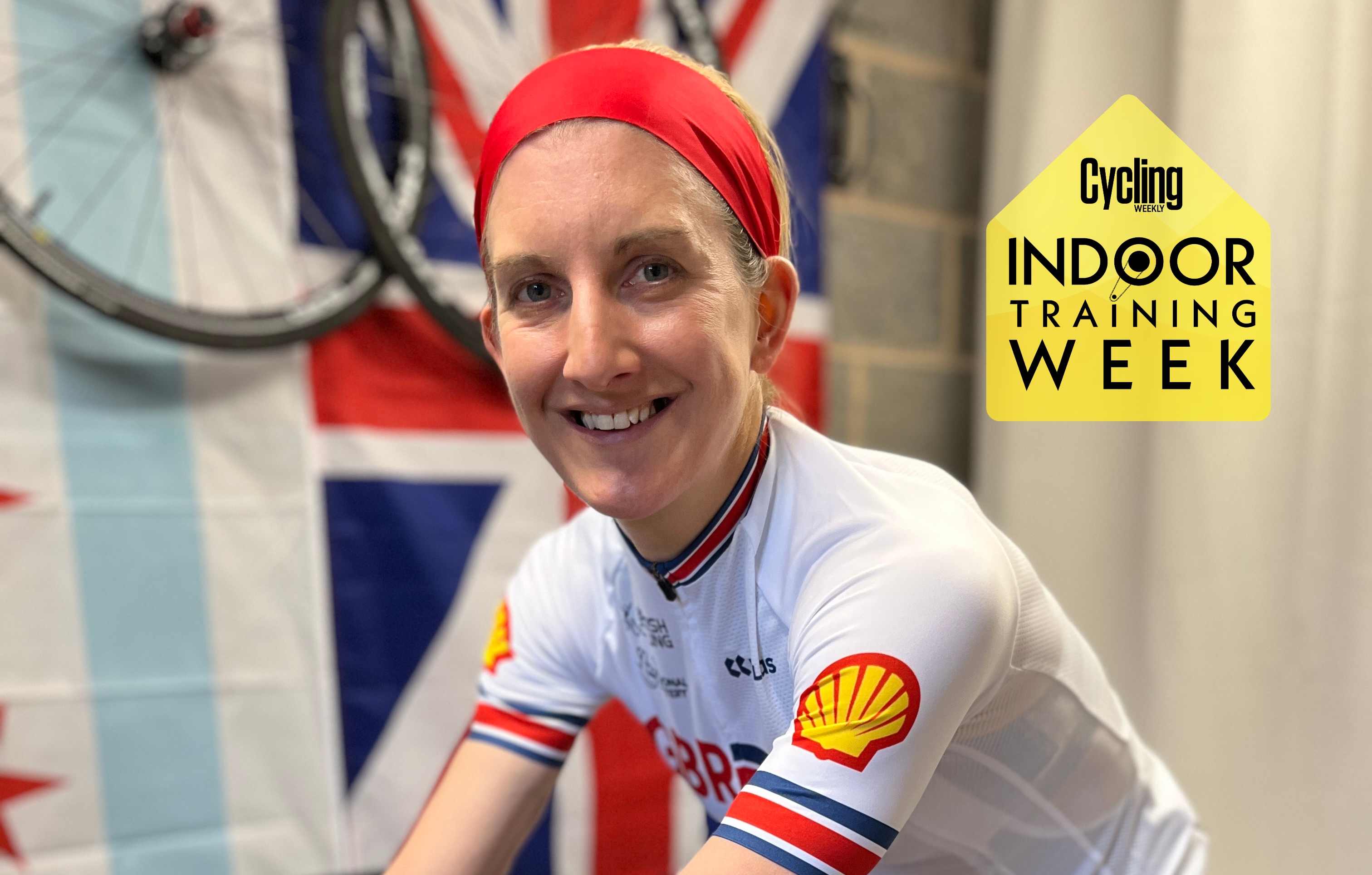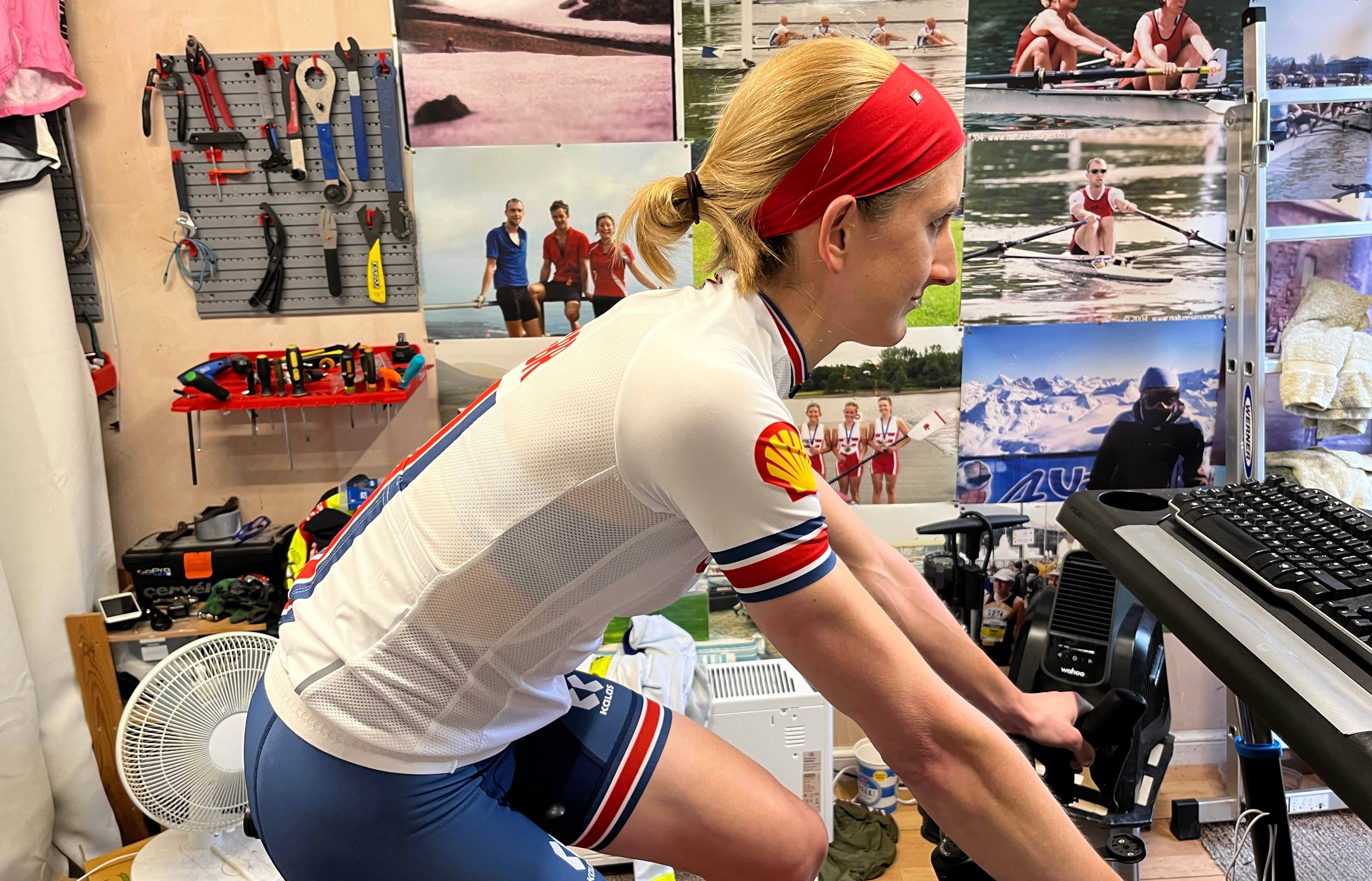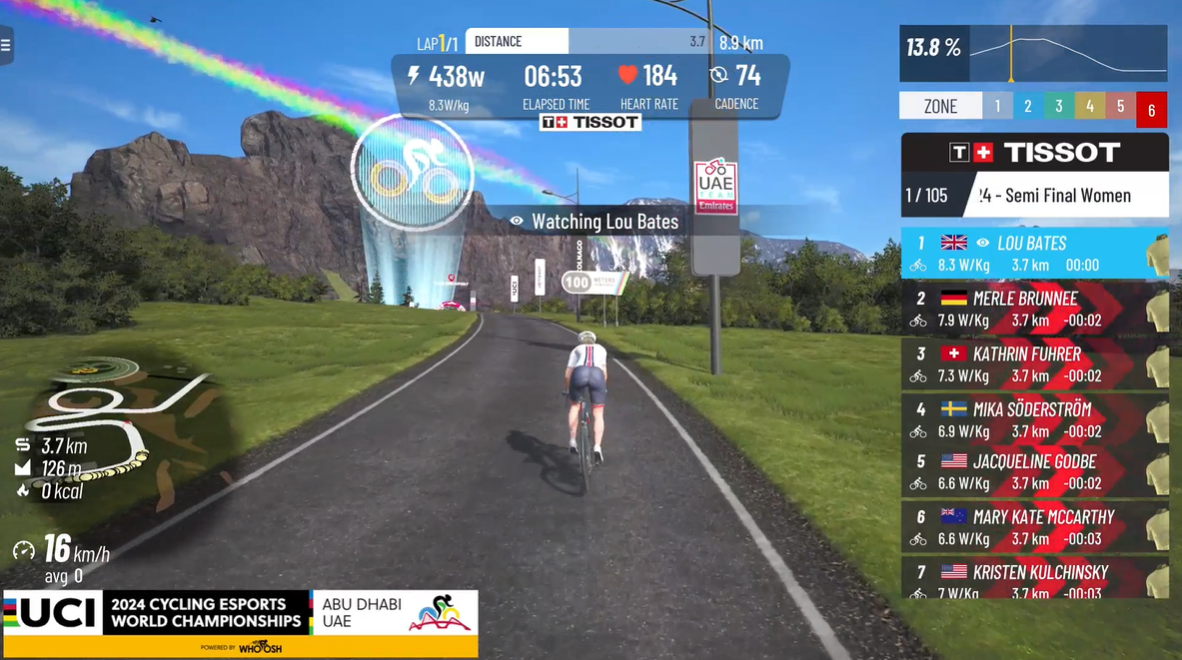
Lou Bates is one of Great Britain’s strongest indoor bike racers, bound for the UCI Cycling Esports World Championships this weekend.
A former rower, she turned to triathlon in her mid-twenties and competed in Ironman events, also once finishing fifth at the Barcelona marathon. She then dedicated herself to cycling, winning the National Hill Climb Championships in 2016, before being introduced to indoor racing on Zwift at the end of 2019. She has since represented GB in international competitions, and, this Saturday, will race on MyWhoosh at the World Championships in Abu Dhabi, UAE, having qualified first in the semi-finals rankings.
Bates, 43, has achieved all of this while working a full-time job as a project manager, and a part-time career as a yoga teacher. Ahead of the World Championships, Cycling Weekly asked her for her top tips for virtual racing. Here’s what she said...

Know your power profile
"My peak power is not great. I am not a fast twitch person in any stretch. Genetics is not on my side, I think, from that standpoint. But the good thing is that I’m very fatigue resistant, so my peak power doesn’t necessarily drop over the course of a hard race.
"Identify what kind of rider you are. Are you a diesel that suits the long climbing races? Are you a sprinter? Are you somewhere in between? You might be happy just racing those races that suit you. But if you want to get better at some of the other races, think about your power profile and what things you want to improve, then do some workouts specific to that, and try to get those bits of your power profile up.
"Sometimes, long sprints can work really well indoors. It’s not a dealbreaker if you can’t hit super-high power. It’s more of a dealbreaker if you can hit that power, but can’t sustain it at all. My husband, for example, is the complete opposite to me. He’s a fast twitch person, but once his one match is extinguished, then it’s just gone, and he’s gone.”
Don't be afraid to draft
“When I first started on Zwift, I used to have a super-high watts per kilo compared to everybody around me in races because I wasn’t saving energy by drafting. I was putting out way more [power] than I actually needed to because I was panicking to keep in the group.
“I would say get into some group rides. There are a ton of group rides that have intervals in them where you’re riding in a group; there’s a leader, and they’ll say, ‘Ok, for the next five minutes, we're going to do four watts per kilo’ or whatever. You can practice staying in the draft. It’s super-handy.”
Practise the courses
“If you’re racing on a particular course, it can be super-helpful to go on that course beforehand and know where the hills are, where the downhills are, and if there are any lumps and bumps that you need to be aware of. In e-racing, every time there’s a hill, the pace always goes up.
“The beauty of e-racing is that, in real life, if you were to do a recon of a course, you might have to drive for an hour to get there. Whereas on these platforms, you can generally get into the world or course that you’re going to be racing on and have a practice quite a few times.”

Have a fan... and a dehumidifier
“Cooling is very important. I have a number of fans, and a dehumidifier, because sometimes in the UK, if it’s raining, it can get really humid and sticky.
"I also have loads of towels, lots of nutrition and fluid. These races, they may be short, but you can burn a ton of energy, and also need a lot of hydration.”
Be meticulous with equipment
"I keep an eye on all of my equipment just to check that it’s not drifting, for example due to temperature changes. Before events, I’m super careful about that, so I will always do test rides and stuff like that. I wouldn’t want to not know that my equipment wasn’t accurate until I race. That would be a nightmare.”
“I have my secondary power source, so I have power pedals with my turbo trainer, and I pretty much record every ride, just so that I can keep an eye on my turbo, because even though a lot of turbos claim to be within 1% accuracy, environmental factors can affect your turbo readings.
Diversify your training
"My training volume is between 15 and 20 hours a week – 15 hours on the bike. I do a couple of gym sessions to help on the bike, but also for just overall health. I’m a 43-year-old woman. I need to be looking after my bones, my hormones, my overall body health as well. Part of that is doing these gym sessions, and obviously doing yoga as part of my yoga teaching.
"In the spring and summer, I tend to go outside a lot more, mainly because I’ve done a big block over the winter, and that’s generally when the race season is for e-racing. I tend to use the summer block to do my base building, and do lots of outside racing. I like doing some bike packing and other stuff that is completely different to e-racing, getting back into nature."







